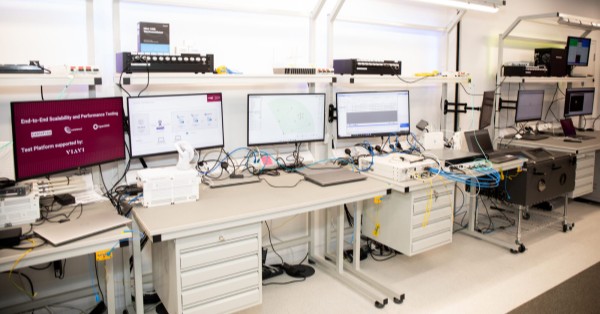Lynk Global Inc., a pioneering firm in the realm of sat2phone telecommunication services, has revealed the first-ever footage displaying a series of bidirectional voice communications via standard mobile phones that were linked through satellite connectivity. These calls were facilitated by the company’s pre-existing satellite cell towers orbiting the Earth.
The CEO and co-founder of Lynk, Charles Miller, referred to Carl Sagan’s quote that exceptional assertions need to be substantiated by exceptional proof, underlining Lynk’s commitment to exceeding expectations. Miller added that after achieving the first connection between a satellite and a regular phone on Earth back in March 2020, they publicly showcased their findings via a video. The company is taking the same approach now, documenting their breakthrough in two-way voice calls.
According to Tyghe Speidel, Lynk’s CTO and co-founder, this groundbreaking news is at the core of their endeavor to establish satellite connectivity for all, regardless of location.
Lynk has commenced SMS services in Palau, and the plan is to extend this service to other countries later this year. The team is ecstatic about exhibiting their capability for voice calls. Even though the current focus remains on prioritizing SMS services for MNO partners, the success of the initial voice calls indicates a significant leap forward in their technological advancements and brings them closer to accomplishing their mission.
You can view the footage of the successful bidirectional voice call facilitated by Lynk’s satellite connectivity here.
About Lynk
Lynk is the world’s only patented, proven, and commercially-licensed satellite-direct-to-standard-mobile-phone system. Our service has been demonstrated and is currently being deployed in more than 20 countries with >30 MNO commercial service contracts covering >50 countries. Lynk’s network, currently providing cell broadcast (emergency) alerts and two-way SMS messaging, is compatible with every existing mobile phone on the planet. In the future, Lynk will launch voice and mobile broadband services. By partnering with Lynk via a simple roaming agreement, a mobile network operator opens the door to new revenue in untapped markets, gives subscribers peace of mind with ubiquitous connectivity, and provides a pathway to economic prosperity for billions of the world’s citizens. For more information, visit www.lynk.world or follow @lynktheworld.
























